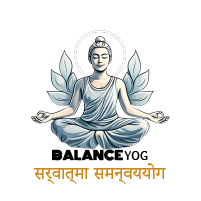CM(Cyclic Meditation)
16 September 2025Cyclic Meditation is a special technique of Yoga derived from Mandukya Upanishad.
Cyclic meditation is a set of stimulation and relaxation based practices and involves cycles of body postures and relaxation techniques
Let us understand how you can practice the technique.
Benefits of cyclic meditation
- Cyclic Meditationis useful in reducing stress and improving the quality of life.
- To release the stress, cyclic meditation practices helps in balancing the body and mind.
- It helps in improving the sleep quality.
- It improves efficiency at work.
- Increases attention span.
- Increases and takes an individual to deeper states of relaxation
Cyclic Meditation is a unique technique that combines yoga postures and relaxation to help practitioners achieve a state of deep relaxation and heightened awareness. It was developed by Dr. R. Nagarathna and Dr. H. R. Nagendra at the Vivekananda Yoga Research Foundation in India. This method aims to utilize the natural rhythms of the body to induce a meditative state and can be particularly effective for stress management, enhancing focus, and promoting overall well-being.
Steps of Cyclic Meditation Technique
1. Preparation
- Find a Quiet Space: Choose a calm, quiet environment free from distractions.
- Comfortable Position: Sit or lie down in a comfortable position with your spine straight. Use a chair, cushion, or mat for support if necessary.
- Relaxation: Close your eyes and take a few deep breaths to relax your body and mind.
2. Starting prayer
- Join your hand in namaskar pose and starts Opening Prayer
o लाएसंबोधयेत्चित्तंविज्ञप्तंचामयेत्पुन: सकाच्यंविज्ञेयत्सम्पूर्णंनचॅलयेत् ||
- Meaning – In the state of oblivion awaken the mind: when agitated pacify it; in between the mind. If the mind has reached the state of perfect equilibrium, then do not disturb it again.
2. Initial Relaxation (Shavasana)
- Lie Down: Lie down on your back in Shavasana (Corpse Pose) with your arms and legs comfortably apart.
- Deep Breathing: Practice deep, slow breathing to relax your body and mind.
- Body Scan: Perform a mental scan of your body from head to toe, consciously relaxing each part.
3. Stimulation Phase
1. Instant Relaxation Technique (IRT)
- Lie Down: Lie flat on your back with your legs apart and arms away from the body, palms facing upward.
- Tense and Relax: Tense all the muscles in your body, hold for a few seconds, and then release completely, allowing the body to relax.
- Deep Breathing: Take a few deep breaths to further relax.
2. Standing Postures (Ardhakati Chakrasana, Ardha Chakrasana, and Padahastasana)
- Ardhakati Chakrasana (Half Waist Rotation Pose): Stand straight, raise your right hand, and bend to the left side. Hold for a few breaths, then switch sides.
- Ardha Chakrasana (Half Wheel Pose): Stand straight, place your hands on your lower back, and gently bend backward. Hold for a few breaths.
- Padahastasana (Hand-to-Foot Pose): Stand straight, inhale, and raise your arms. Exhale and bend forward to touch your feet or ankles. Hold for a few breaths.
4. Relaxation Phase
1. Quick Relaxation Technique (QRT)
- Lie Down: Lie flat on your back with your legs apart and arms away from the body, palms facing upward.
- Deep Breathing: Focus on your breath, observing the natural rise and fall of your abdomen. Allow your breath to slow down naturally.
- Mindfulness: Bring your attention to different parts of your body, one at a time, relaxing each part as you focus on it.
2. Supine Postures (Setubandhasana, Matsyasana)
- Setubandhasana (Bridge Pose): Lie on your back, bend your knees, and place your feet flat on the floor. Lift your hips toward the ceiling, hold for a few breaths, and then release.
- Matsyasana (Fish Pose): Lie on your back, place your hands under your hips, and lift your chest while arching your back and placing the crown of your head on the floor. Hold for a few breaths.
5. Meditation Phase
1. Deep Relaxation Technique (DRT)
- Lie Down: Lie flat on your back with your legs apart and arms away from the body, palms facing upward.
- Deep Breathing: Take slow, deep breaths to further relax.
- Visualization: Visualize a peaceful scene or repeat a calming word or phrase to yourself.
- Body Scan: Perform a mental scan of your body from head to toe, ensuring all parts are completely relaxed.
6. Closing Prayer
- Now feel the changes in you and join your hands in namaskar pose for Closing Prayer.
- ॐसर्वेभवन्तुसुखिनः।
सर्वेसन्तुनिरामयाः।
सर्वेभद्राणिपश्यन्तु।
माकश्चित्दुःखभाग्भवेत्॥
ॐशान्तिःशान्तिःशान्तिः॥ - Meaning:
Let all be happy. Let all be free from disease. Let allalign with the ultimate reality. Let no one suffer from the miseries. Om Peace PeacePeace.
- Relax yourself while rubbing your both palms and now place them on your eye, face and body slowly.
- Gradual Transition: Slowly bring your awareness back to the present moment by focusing on your breath and the sensations in your body.
- Gentle Movement: Begin to gently move your fingers and toes, then your arms and legs.
- Sit Up: Roll to one side and slowly sit up, keeping your eyes closed for a few moments.
- Open Eyes: When you feel ready, gently open your eyes.
Benefits of Cyclic Meditation
- Stress Reduction: Helps reduce physical and mental stress through relaxation and mindfulness.
- Enhanced Focus: Improves concentration and mental clarity by alternating between stimulation and relaxation phases.
- Emotional Balance: Promotes emotional stability and a sense of well-being.
- Physical Health: Benefits the cardiovascular system, reduces muscle tension, and improves overall physical health.
- Mind-Body Connection: Enhances the awareness of the connection between the mind and body.
By regularly practicing Cyclic Meditation, you can achieve a balanced state of relaxation and alertness, which can enhance your overall quality of life




